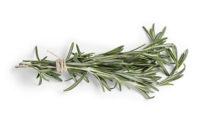A better (shelf) life
Natural shelf-life extenders sound appealing, but they also have seasonal and food-safety concerns.

The quest for clean labels — and food safety — isn’t always an easy one. Meat processors are using more natural solutions to extend shelf life to please consumers, but are also hedging against food-safety risks with technologies like high-pressure processing (HPP).
Their caution is warranted. Recently, the Food and Drug Administration announced, after a three-year study of 20,000 shipments of spice lots, that 7 percent were contaminated with Salmonella (9 percent from India and 14 percent from Mexico).
Spices and botanicals have long been used as shelf-life extenders in meat and poultry, and for good measure are usually irradiated in large food facilities before being used, notes Ted Labuza, Morse Alumni Distinguished Teaching Professor of Food Science and Engineering, University of Minnesota.
“People don’t think about spices as being dangerous,” says Labuza, “but when spices are mixed in to the product, organisms can get in the air system and touch meat on the line before it is fully packaged.”
These bacterial hitchhikers do not pose a problem in the native cuisines of the originating countries, because they are subjected to intense and often prolonged heat, says Kantha Shelke, Ph.D., principal, Corvus Blue, a Chicago-based food consultancy.
“But they are dangerous in modern meat and poultry production, [which] uses them in marinades that are merely mixtures of various ingredients that are not subjected to heat before addition to meat and poultry,” she says, “and which often spend an extended amount of time in transportation and duration — allowing for growth and proliferation — before being cooked.”
Natural, at a cost
Indeed, consumers have been opting for healthier alternatives to shelf-life extenders like conventional antioxidants and traditional sorbates and benzoates.
“As a result, antioxidants that occur in nature — grape extracts, green tea extracts, oregano and rosemary — are gaining in popularity,” says Shelke.
But, naturally derived antioxidants are subject to seasonal and agricultural uncertainties.
“Formulators are learning the art of combining various materials for synergistic protection of meat emulsions and developing standby mixes, should there be a shortage of materials,” she says. This approach is also forcing manufacturers of processed foods to revisit and shorten the best-by dates.
“Consumers see the new products with shorter shelf-life as actually better for them,” says Shelke.
Food safety, behind the scenes
The meat and poultry industry has utilized a number of new technologies in recent years to improve food safety, she says.
“For example, high-pressure processing, steam vacuums, steam pasteurization, antimicrobials and aseptic packaging have all advanced in recent years,” says Shelke.
Other notable technologies include the use of hypochlorous acid, sodium nitrite used for packaging raw meat, various marinades used to flavor and seal meats from outside contamination, the use of sodium propionate as antimicrobial agent, the use of cultured substrates as antimicrobials and spice derivatives as antimicrobials.
However, “the meat and poultry industry has not been very forthcoming about the improvements they are making to ensure food safety — largely because they consider their advances to be their competitive edge in the marketplace,” she says.
This lack of communication with consumers can cause confused shoppers to stick with a few trusted product brands or give up on the product completely.
“If meat and poultry processors would invest in educating their consumers and being more transparent, then they will benefit from the loyalty of educated consumers that understand why these new technologies or improvements are actually better for them,” says Shelke.
Looking for a reprint of this article?
From high-res PDFs to custom plaques, order your copy today!







